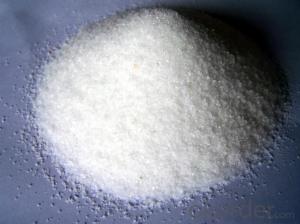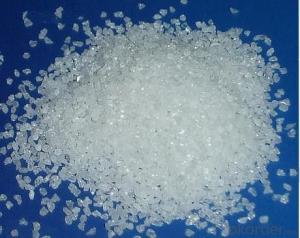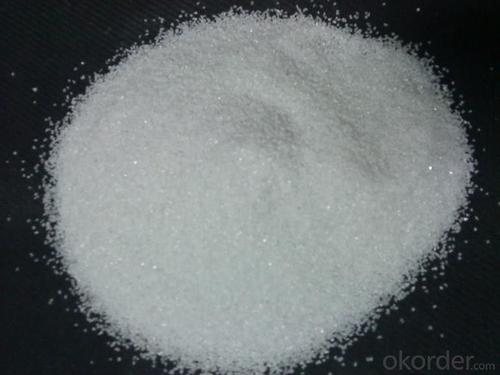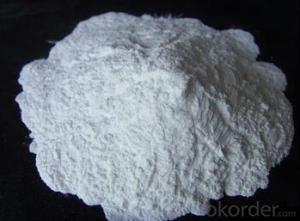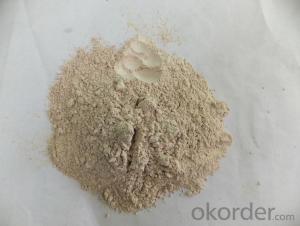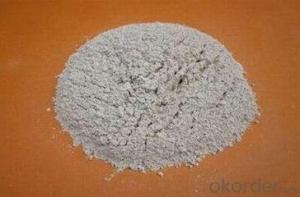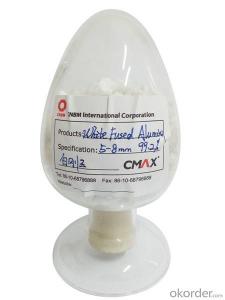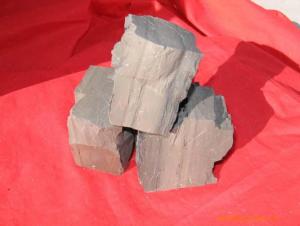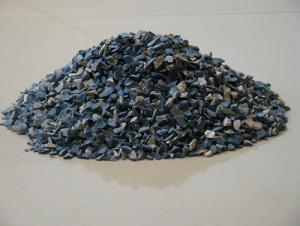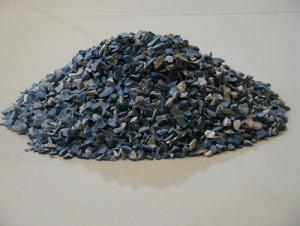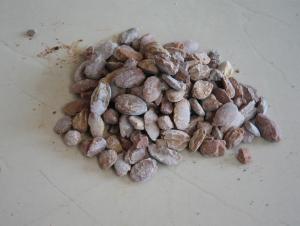Raw Materials for Refractory - White Fused Alumina 99.5
- Loading Port:
- Tianjin
- Payment Terms:
- TT OR LC
- Min Order Qty:
- -
- Supply Capability:
- 1000MT m.t./month
OKorder Service Pledge
Quality Product, Order Online Tracking, Timely Delivery
OKorder Financial Service
Credit Rating, Credit Services, Credit Purchasing
You Might Also Like
Specification of white fused alumina
Item | B.D(g/cm3) | Apparent Porosity | Chemical Composition | |||
AL2O3 | Fe2O3 | SiO2 | NaO2 | |||
WFA | 3.7 | 7.8% | 99.2%min | 0.1%max | 0.2%max | 0.3%max |
Packaging & Shipping
In 1MT jumbo bag or as the buyer request.
We ship the cargo in 20' GP containers,each container loads 25MT/20bags.
Application of white fused alumina
1.Light-weight insulating refractories
2.Shaped and unshaped refractories
3.Pre-cast shapes and castables
4.High Alumina Refractory mixes and gunning mixes
- Q: Who knows the refractoriness of high temperature lightweight firebricks?
- Hefei Jiu oak decor help you answer; the biggest feature is refractory: refractoriness 700.
- Q: What's the fire endurance of fire windows?
- That is fire resistance rating, fire-resistant time in the case of fire! It can be basically classified into the following levels and the fire endurance of the fire window is as follows as well: A class fire window: no less than 1.2h; B class fire window: no less than 0.9h; C class fire window: no less than 0.6h. This is in accordance with the latest specification of gb16809-2008 fire windows.
- Q: What type of firebrick does TZ-3 represent?
- It is the standard brick.
- Q: What a blast furnace refractories generally?
- refractories for blast furnace include carbon brick and silicon-aluminum refractory. BF carbon brick inlcudes half-carbon charcoal bricks, microporous charcoal brick, ultra porous charcoal bricks, graphitic brick and mould pressing charcoal brick. tiles and molded graphite small charcoal bricks. I hope my answers above are helpful to you and your ideal anwers.
- Q: Is there requirement for radiation indicator in refractory?
- All refractories have no radiated harm to environment, so there is no requirement. From the elemental analysis, magnesite. I do not know it is helpful to you. But for refractory rwa material, any chemical element is radiated, including silicon?dioxide; If they are radioactive. From the use analysis, such as bauxite, do not have use value.
- Q: How should refractory cement be used?
- Refractory cement is very easy to use. Add some water and mix, and it will harden. Generally there is no need to add other binding agents, but you can add some refractory aggregate and powder. If you use only refractory cement, it will generate a lot of cracks after high temperature. Generally refractory cement can withstand temperature of about 1300 degrees.
- Q: I wanna ask what are the acidic refractories?
- You can look at these: (1) silica?brick with stronge acidity, unshaped silicious refractory, quartz glass and fused silica combined products; (2) semi-silica refractory with moderate acidity and pyrophyllite refractory; (3) clay-based refractory with weak acidity. I hope it is useful!
- Q: Can anyone say something about what A-level fire-proof decorative material is?
- Combustion performance rates of decoration materials ratess combustion performance of decoration materials A incombustible B1 flame retardancy B2 flammability B3 high flammability The B1 rate combustion performance of gypsum plaster board and mineral wool acoustic panel absorber installed on steel joist can be used as A-level decoration materials. Inorganic decorative coating applied on the A level substrate can be used as A level decoration materials. Hope you adopt
- Q: what is the specs of thermal insulation refractory slab ?
- fireproof?panel is also called refractory slab, which refers to a layer of veneer. Its thickness is generally about 0.8 mm and there is a veneer made after compression of surface layer of paper, colored paper and multilayer kraft paper. Wear-resistant, heat-resistant and fire-resistant properties, scratch resistant and easy to clean, rich colors and good stability.
- Q: What are grades of refractory materials?
- Refractories have lots of varieties which all have different purposes.1 divided according to the level of refractoriness: ordinary refractory materials: 1580 ℃ to 1770 ℃, advanced refractories: 1770 ℃ to 2000 ℃ and super refractories: above 2000 ℃ 2, divided in accordance with shapes and sizes : Standard ones: 230mm × 113mm × 65mm, no more than four ruler.
Send your message to us
Raw Materials for Refractory - White Fused Alumina 99.5
- Loading Port:
- Tianjin
- Payment Terms:
- TT OR LC
- Min Order Qty:
- -
- Supply Capability:
- 1000MT m.t./month
OKorder Service Pledge
Quality Product, Order Online Tracking, Timely Delivery
OKorder Financial Service
Credit Rating, Credit Services, Credit Purchasing
Similar products
Hot products
Hot Searches
Related keywords

